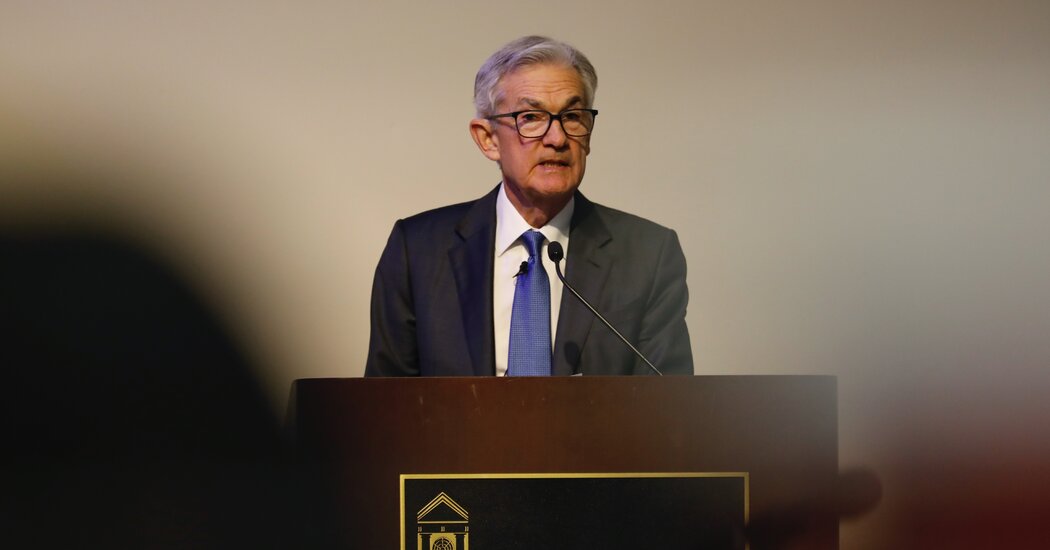In the Creator Economy, It’s the Wild Wild West for all Involved
This article is part of our special section on the DealBook Summit that included business and policy leaders from around the world.
Takeaways
-
Authenticity is the coin of the realm, essential for the success of creators and brands alike, but turning it into a business undermines that identity; unless that tension can be resolved, this whole structure will fail.
-
Creators can’t rely on brands and platforms, so they must evolve and diversify into what are effectively independent mini-studios, making sure that they bring their audiences with them by owning their data and contact lists.
-
Brands need to trust creators’ ability to speak to and understand their audience and be very clear (and realistic) about their key performance indicators (known as KPI’s). This means thinking about creators in two ways: as macroinfluencers with lots of followers whose work can boost a brand’s name recognition and profile; and microinfluencers who can sell products to their specific communities.
The creator economy is powered by millions of individuals who build and monetize their online celebrity by making deals with big brands and selling products to their followers. It might still be seen as superficial, but the sector is projected to reach around $480 billion by 2027, according to Goldman Sachs Research.
But between the creators, the brands that employ them, the consumers that follow them and the platforms that enable it all, who has the real power? That is what a 10-person task force debated during last week’s DealBook Summit in New York.
The gathered experts ranged from creators with millions of followers and brand executives to the founder of a financial start-up aimed at helping creators perform more like the businesses they are. They agreed only that it is a wild wild West — one in which there’s no actual sheriff, just new platforms and brands with which to partner, all of them jockeying for territory and none of which are loyal to the creators who benefit them (and benefit from them).
“I feel like the audience has the power, the creators have the medium and the brands have the means,” said Vivian Tu, the financial educator behind the multimillion-follower social media accounts @your.richbff, the podcast “Networth and Chill with Your Rich BFF,” and the author of the upcoming book “Rich AF: The Winning Money Mindset That Will Change Your Life.”
Dara Treseder, the chief marketing officer of the software developer Autodesk, said, “If you miss out on the audience and take your eye off of it, whether you’re a brand or a creator, you miss the mark.” Ms. Treseder considers it a virtuous cycle versus a vicious one, “because by nourishing our audiences, we actually end up growing the economy.”
Talita von Furstenberg, the co-chairwoman of the fashion company Diane von Furstenberg, pointed out that the creator economy has “taken over the entire marketing industry, and that runs all of the purchasing power.” Today’s consumers have unprecedented power, she said, “because they can actually hold creators and brands accountable for the first time in history.” In a world in which thousands of creators and brands are competing for consumers’ attention and money, people can now choose based on their values.
Stephen Dubner, a journalist and a former New York Times Magazine editor who is the host of “Freakonomics Radio,” said he believed that the platforms reign today. “If you just look at the history of creation, the creators never win,” he said. “When the platform has the power, they have close to absolute power.”
What creators and brands alike are after is authenticity: Influencers build an audience because they seem relatable. Brands know that the best way to reach consumers is to seem real — or at least align themselves with someone who is.
“We’re chasing authenticity,” said Richie Shazam, an artist, model and photographer whose work, including the book “Shazam,” explores the intersection between art, fashion, gender and identity. “Like, now there’s a dollar sign for authenticity and realness, and it’s like, well, what’s really real? Because I don’t think it’s really real when these things are commodifiable.”
The audience can tell when creators are following a brand’s script, yet brands don’t seem to have gotten the memo. Marc D’Amelio, the former fashion executive whose teenage daughters Charli and Dixie became TikTok juggernauts thanks to Charli’s dance posts, recalled meetings with advertising executives who would say, “Oh, yeah. You’re the TikTok dance girl. Why don’t you just hold my product and do a TikTok dance?”
“So we did the reverse,” he said. Charli grew up with Dunkin’ Donuts and would have a cup in every video, so, he recalled, “we went to Dunkin’ Donuts and said, ‘Look, we’re doing all this stuff.’ It already started out as authentic.”
Eva Serrano, the global brand president of Calvin Klein, said that learning how to work collaboratively is the steepest part of the learning curve for brands. “It really takes a lot of effort to be translated into what you really want to say,” she said to the creators present.
In the creator economy, success threatens the very authenticity that made a creator successful. “You start in your living room and you’re just like everybody else and you’re doing your videos: ‘Oh my God, so relatable,’” said Christina Najjar, a.k.a. @tinx, who, in addition to having 1.5 million TikTok followers, hosts the podcast “It’s Me, Tinx” and wrote the book “The Shift.” “All of a sudden you start getting P.R.: ‘OK, well, I’m happy for her.’ … All of a sudden she’s got an agent and she’s getting makeup every day and this and that and then, all of a sudden you’re no longer relatable,” she concluded. “And people, they want that authenticity.”
The arc is getting shorter and faster, said Ms. Najjar, who noted that her numbers and engagement drop when she posts too many brand deals. “Are you able to survive that jump from when you become relatable to unrelatable? And then, second, once you get there, what are you going to do with it? It is a job: There’s a lot of strategy involved in it.”
The assembled creators have used their 15 minutes of fame to diversify. (All three have written books.) Mr. D’Amelio likened the creation of D’Amelio Brands, which sells footwear and snacks at stores such as Walmart, to Jay-Z’s creation of Roc-A-Fella Records, in which “the creator became the business.”
“From our perspective, in order for the creator economy to thrive, you’ve got to help more creators understand that they are actually businesses,” said Sima Gandhi, who co-founded the financial services company Creative Juice, which teaches creators how to do such things as invoice and deduct expenses on their taxes — and declare income on them.
The relative lack of contractual guardrails and government regulation around this supercharged sector surprises all involved. The Federal Trade Commission requires influencers to disclose sponsored content, and the I.R.S. keeps an eye on influencers who might be profiting from it. “SAG-AFTRA [the Screen Actors Guild] is coming for the creators,” added Myisha Moore, the vice president of influencer marketing at the global public relations firm Edelman.
“I think it’s really challenging to say we should put guardrails around creators, especially money,” said Ms. Tu, “because I personally have this attitude that if I know I only have a certain amount of shelf life, I’m going to try to print as much cash as I humanly can in the next 10 years.”
Like the influencers themselves, platforms can only stay so hot for so long. “It feels like every video that I see on my TikTok feed is eligible for commission or it’s an ad,” Ms. Najjar said. Where will the wild wild West graze next? The panelists had some surprising favorites.
“I love Snapchat,” Ms. Najjar said. “They treat their creators really well.” And Ms. Treseder said LinkedIn is having a lot of resurgence.
This lack of stability and trust means that making oneself into a diversified business is essential. Ms. Tu explained: “If you are a traditional influencer and you don’t branch out, you are an N.F.L. player: You take one bad hit to the knee, you’re done.”
Moderator: Vanessa Friedman, fashion director and chief fashion critic, The New York Times
Participants: Marc D’Amelio, chief executive and co-founder, D’Amelio Brands; Stephen Dubner, author, journalist and host of “Freakonomics Radio”; Sima Gandhi, chief executive and co-founder, Creative Juice; Myisha Moore, vice president of influencer marketing, Edelman; Christina Najjar, digital creator; Eva Serrano, global brand president, Calvin Klein; Richie Shazam, artist, model, photographer; Dara Treseder, chief marketing officer, Autodesk; Vivan Tu, chief executive and founder, Your Rich BFF Media; Talita von Furstenberg, co-chairwoman, Diane von Furstenberg


